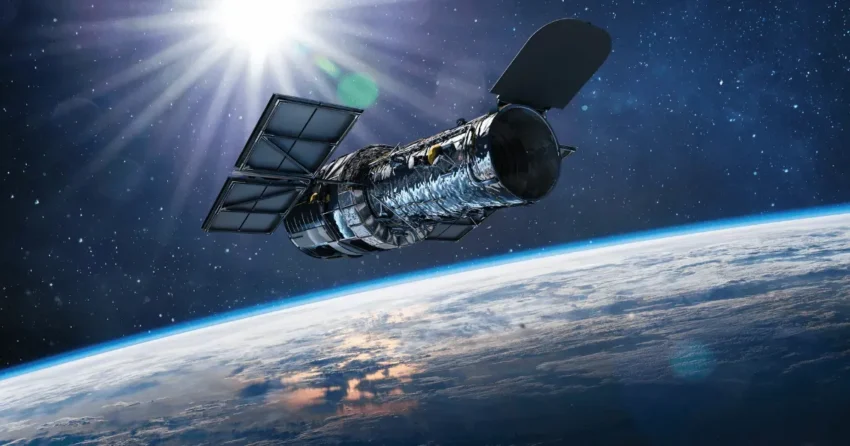T-Mobile satellite connectivity has officially entered the scene, revolutionizing how users communicate, especially in remote areas. Launched during the Super Bowl, this innovative service, developed in partnership with Starlink, extends its reach across more than 500,000 square miles of the U.S., eliminating the reliance on traditional cell towers. Currently, it enables users to send text messages, with exciting plans to include voice and data services in the near future. Even customers from competing networks like AT&T and Verizon can experience this groundbreaking satellite internet service for free until July. With its direct-to-device connectivity, T-Mobile is poised to redefine mobile plans and connectivity in the ever-evolving telecommunications landscape.
The recent announcement of T-Mobile’s satellite messaging service marks a significant milestone in mobile technology. This new service, rooted in advanced satellite internet solutions, offers unprecedented coverage and accessibility for users, including those from rival carriers. By partnering with Starlink, T-Mobile has created a unique opportunity for direct-to-device communication, enhancing the user experience even in areas lacking conventional cell coverage. As this service rolls out, it stands to transform mobile plans and connectivity options, promising to bridge the gap for millions across the United States. With competitive offerings and a focus on innovation, T-Mobile is setting the stage for a new era in telecommunications.
T-Mobile Satellite Connectivity: A Game Changer in Mobile Communication
T-Mobile’s recent launch of its satellite connectivity public beta marks a revolutionary step in mobile communication, especially in areas where traditional cell towers have limited reach. By collaborating with Starlink, T-Mobile has extended its coverage to an astonishing 500,000 square miles across the United States, ensuring that even the most remote regions can access essential messaging services. This innovative approach to satellite internet not only benefits T-Mobile subscribers but also opens the door for AT&T and Verizon customers to experience this cutting-edge technology without the need for a carrier switch.
The direct-to-device (D2D) capabilities of the T-Mobile Starlink partnership allow users to send text messages and picture messages seamlessly, utilizing a network of specially configured satellites that orbit over 200 miles above the Earth. As the service currently supports text messaging, plans for future voice and data services are highly anticipated. This strategic move not only enhances T-Mobile’s service offerings but also positions it as a leader in the competitive mobile market, potentially attracting users from other carriers looking for reliable connectivity.
Exploring the Benefits of T-Mobile’s Satellite Connectivity Service
One of the standout features of T-Mobile’s satellite connectivity is its accessibility for all users, including those from rival networks such as AT&T and Verizon. This inclusive approach allows customers to trial T-Mobile’s service for free until July, making it an attractive option for those seeking improved communication solutions without the commitment to switch carriers. This initiative reflects T-Mobile’s commitment to expanding its user base and enhancing customer satisfaction through innovative technology.
Furthermore, the satellite service is a significant addition to T-Mobile’s existing mobile plans, particularly the Go5G Next plan, which will incorporate this service at no extra cost after the free trial period. The capabilities of satellite internet are especially valuable in urban areas with high demand and in remote locations where conventional cell service falls short. With T-Mobile’s satellite connectivity, users can maintain communication in situations where traditional networks may fail, making it a crucial tool for both everyday users and emergency situations.
How T-Mobile’s Satellite Internet Service Works
T-Mobile’s satellite internet service operates by utilizing a network of satellites equipped with advanced technology to provide direct-to-device connectivity. These satellites are strategically positioned to cover a vast area, allowing users to send and receive messages without relying on traditional cell towers. This groundbreaking approach is particularly beneficial in regions where infrastructure is lacking or during emergencies when conventional communication lines may be disrupted.
The system’s design enables it to function efficiently, with satellites traveling at speeds exceeding 17,000 miles per hour. As a result, users can experience reduced latency and improved connectivity, critical factors for effective communication. Although the service currently supports only text messaging, T-Mobile has plans to expand this functionality to include voice and data services, which would further enhance its value for customers looking for comprehensive mobile solutions.
The Future of T-Mobile’s Satellite Connectivity
As T-Mobile continues to develop its satellite connectivity service, the future looks promising, especially with plans to integrate voice and data services. This expansion will likely attract more users seeking reliable communication options in various environments, from urban settings to remote areas. The collaboration with Starlink positions T-Mobile at the forefront of mobile innovation, paving the way for a new era of connectivity that transcends the limitations of traditional cellular networks.
In addition, as competitors like Verizon and AT&T work on their satellite services, T-Mobile’s proactive approach could give it a significant edge in the market. By providing users with direct access to satellite capabilities, T-Mobile is setting a precedent that may influence how mobile communication evolves in the coming years. The ability to communicate without relying on ground-based infrastructure could redefine consumer expectations and service offerings in the mobile industry.
Comparing T-Mobile’s Satellite Service to Competitors
When comparing T-Mobile’s satellite service to those of its competitors, it’s important to note the unique advantages it offers. Unlike Verizon’s limited emergency sharing service available only on specific devices, T-Mobile provides a comprehensive solution that allows all users, regardless of their current carrier, to access satellite messaging without changing providers. This inclusivity is a significant selling point for users looking for seamless connectivity.
Additionally, T-Mobile’s collaboration with Starlink sets it apart from AT&T’s partnership with AST SpaceMobile, which is still in development. While AT&T aims to offer a range of services, including video, T-Mobile has already launched its public beta, demonstrating a commitment to delivering immediate value to its customers. As the competition heats up in the satellite internet space, T-Mobile’s early entry could solidify its reputation as a leader in mobile connectivity.
User Experience with T-Mobile’s Satellite Connectivity
Users who have accessed T-Mobile’s satellite connectivity report a generally positive experience, particularly with the ease of sending and receiving messages in areas with limited cellular coverage. The ability to communicate effectively in remote locations has proven invaluable for many users, especially those who frequent outdoor activities or travel to less populated regions. The simplicity and reliability of the service make it an appealing option for individuals seeking consistent communication.
However, as the service is currently in its beta stage, users have also expressed anticipation for the addition of voice and data capabilities. As T-Mobile continues to refine its offerings based on customer feedback, the expectation is that future updates will enhance the overall user experience, providing even more robust communication tools that cater to the needs of modern mobile users.
T-Mobile’s Strategic Initiative to Attract New Customers
T-Mobile’s satellite connectivity initiative is not just a technological advancement; it is a strategic maneuver to attract new customers from competing carriers. By offering a free trial period for AT&T and Verizon users, T-Mobile is creating an opportunity for potential customers to experience its services without any risk. This strategic approach is designed to entice users who may have previously been hesitant to switch carriers due to the perceived inconvenience.
This tactic not only allows T-Mobile to showcase the benefits of its satellite service but also positions it as a customer-oriented carrier willing to innovate for the benefit of its users. As more customers experience the advantages of T-Mobile’s satellite connectivity firsthand, the likelihood of them transitioning to T-Mobile’s plans increases, further solidifying its market position.
The Role of Satellite Internet in Modern Communication
Satellite internet plays a crucial role in modern communication, particularly in bridging the gap in connectivity for individuals in remote areas. As traditional cellular networks often struggle to reach these locations, satellite services like T-Mobile’s offer a viable solution that ensures users can stay connected. This capability is essential not only for personal communication but also for business operations in various industries.
Moreover, as the reliance on mobile devices continues to grow, the importance of reliable communication channels cannot be overstated. T-Mobile’s satellite connectivity enhances this landscape by providing an alternative means of communication that is not dependent on terrestrial infrastructure. This evolution in mobile communication is likely to influence how businesses and individuals approach connectivity, especially in emergency situations where traditional services may fail.
Potential Challenges of T-Mobile’s Satellite Connectivity
Despite the promising benefits of T-Mobile’s satellite connectivity, there are potential challenges that the company may face as it expands its services. One significant concern is ensuring consistent coverage and connectivity in varying weather conditions. Unlike traditional cellular networks, satellite signals can be disrupted by heavy rain, snow, or other environmental factors, which could affect user experience and reliability.
Additionally, as more users adopt the service, the demand for bandwidth will increase, potentially leading to congestion and slower speeds. T-Mobile will need to address these challenges to maintain a high standard of service and customer satisfaction. Continued investment in technology and infrastructure will be essential for the company to overcome these hurdles and solidify its position as a leader in satellite internet connectivity.
Looking Ahead: T-Mobile’s Vision for Satellite Services
Looking ahead, T-Mobile envisions a future where satellite services become an integral part of its mobile offerings, expanding beyond text messaging to encompass full voice and data capabilities. This vision aligns with the growing demand for reliable communication solutions in an increasingly connected world. By investing in satellite technology, T-Mobile aims to enhance its service portfolio and meet the evolving needs of customers across diverse environments.
As the landscape of mobile communication continues to shift, T-Mobile’s proactive approach to satellite connectivity positions it well for future growth. By staying ahead of industry trends and customer expectations, T-Mobile is not just responding to the current demand but actively shaping the future of how individuals connect and communicate in both urban and remote settings.
Frequently Asked Questions
What is T-Mobile satellite connectivity and how does it work?
T-Mobile satellite connectivity is a new service launched in partnership with Starlink that allows users to send text messages via satellite, extending coverage to over 500,000 square miles in the US. This service operates without traditional cell towers, utilizing specially configured satellites that provide direct-to-device connectivity.
How can AT&T and Verizon customers access T-Mobile satellite connectivity?
AT&T and Verizon customers can access T-Mobile satellite connectivity for free until July by signing up for the public beta. They do not need to switch carriers, making this an excellent opportunity to experience T-Mobile’s satellite internet capabilities.
What features does T-Mobile’s satellite connectivity currently support?
Currently, T-Mobile’s satellite connectivity supports text messaging, including picture messages. Voice and data services are planned for future rollout, enhancing the utility of the service for users in remote areas.
Is T-Mobile satellite connectivity included in mobile plans?
Yes, after the free trial period until July, T-Mobile satellite connectivity will be included at no extra cost in the carrier’s Go5G Next mobile plan, making it accessible to subscribers.
What are the benefits of T-Mobile’s partnership with Starlink for satellite connectivity?
The partnership with Starlink enables T-Mobile to offer extensive satellite connectivity across vast areas of the US, enhancing coverage in locations where traditional cell service is limited or unavailable. This innovative approach leverages direct-to-device technology to ensure users can stay connected.
When can we expect voice and data services from T-Mobile’s satellite connectivity?
While T-Mobile’s satellite connectivity currently supports text messaging, the company plans to introduce voice and data services in the future, expanding the functionality of the service for users.
How does T-Mobile’s satellite connectivity compare to Verizon and AT&T’s services?
T-Mobile’s satellite connectivity provides unique advantages, including the ability for AT&T and Verizon customers to try the service for free without changing carriers. In contrast, Verizon and AT&T are developing their own satellite services, but they may not yet offer the same level of access or coverage.
What technology does T-Mobile use for its satellite connectivity service?
T-Mobile uses specially configured satellites that operate at over 200 miles above Earth, traveling at speeds of over 17,000 miles per hour, to deliver direct-to-device connectivity for satellite messaging.
| Feature | Details |
|---|---|
| Launch | Public beta launched during Super Bowl, available to all users including AT&T and Verizon. |
| Coverage Area | Extends coverage to over 500,000 square miles of the US without traditional cell towers. |
| Supported Services | Currently supports text messaging; voice and data services planned for future. |
| Free Trial | Free until July for AT&T and Verizon customers; included with Go5G Next plan after. |
| Technology | Utilizes D2D capable satellites orbiting 200 miles above Earth at high speeds. |
| Competitor Services | Verizon developing its own service; AT&T working with AST SpaceMobile for satellite services. |
Summary
T-Mobile satellite connectivity is set to revolutionize mobile communications by providing extensive coverage across the U.S. This innovative service, launched during the Super Bowl, allows users including those from AT&T and Verizon to connect without relying on traditional towers. With a focus on text messaging for now and plans for expanding to voice and data, T-Mobile is paving the way for a more connected future. The free trial until July offers an enticing opportunity for users to experience satellite connectivity, demonstrating T-Mobile’s commitment to enhancing user experience and drawing customers from competitors.






